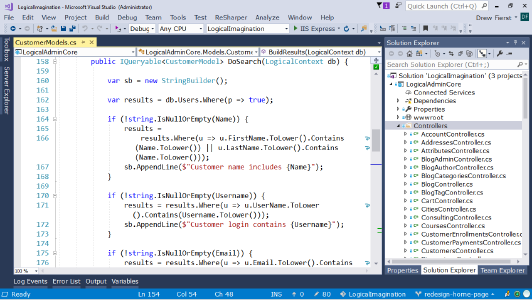

Object-Oriented Design Patterns Training
2 days (10:00 AM - 5:00 PM Eastern)
$750.00
Register for a live online class.
Details
Subjects Covered
Prerequisites
Setup Requirements
Details
Course Details
This course provides software developers with skills to create high quality, object-oriented designs exhibiting improved flexibility, reduced maintenance costs, and increased understanding of the resulting code. Participants learn by examining and discussing the 23 patterns made famous by the "Gang of Four" book. Although this course is theoretical, examples and code snippets are provided to illustrate the patterns and the rationale for using that pattern.
This course is designed for software developers looking to improve their design choices in creating object-oriented applications.
- Improve software architecture
- Build design pattern vocabulary
- Discuss trade-offs in applying various design patterns
- Gain concepts and tools for writing better object-oriented code
- Gain concepts for better documenting object-oriented code
- Review relevant UML notation
Subjects Covered
Object-Oriented Design Patterns
- Overview
- What are Design Patterns?
- Principles of Patterns
- Categorization of Patterns
- UML Review
- Object Creation Patterns
- Factory Method
- Abstract Factory
- Builder
- Prototype
- Singleton
- Structural Patterns
- Adapter
- Decorator
- Proxy
- Facade
- Composite
- Flyweight
- Bridge
- Behavioral Patterns
- Chain of Responsibility
- Strategy
- Iterator
- Template Method
- Mediator
- Observer
- Memento
- Command
- State
- Visitor
- Interpreter
Prerequisites
Before Taking this Class
Knowledge of and programming experience with an object-oriented programming language.Setup Requirements
Software/Setup For this Class
None
Onsite Training
Do you have five (5) or more people needing this class and want us to deliver it at your location?

